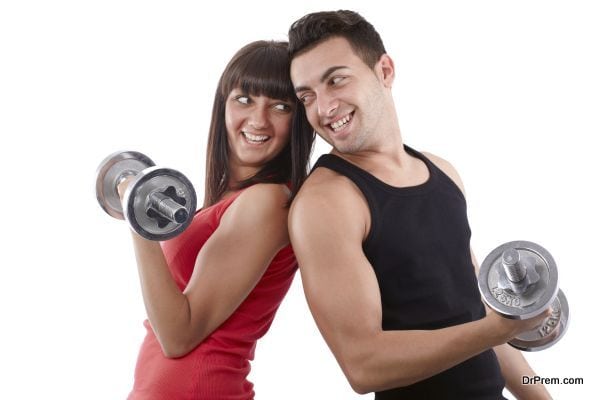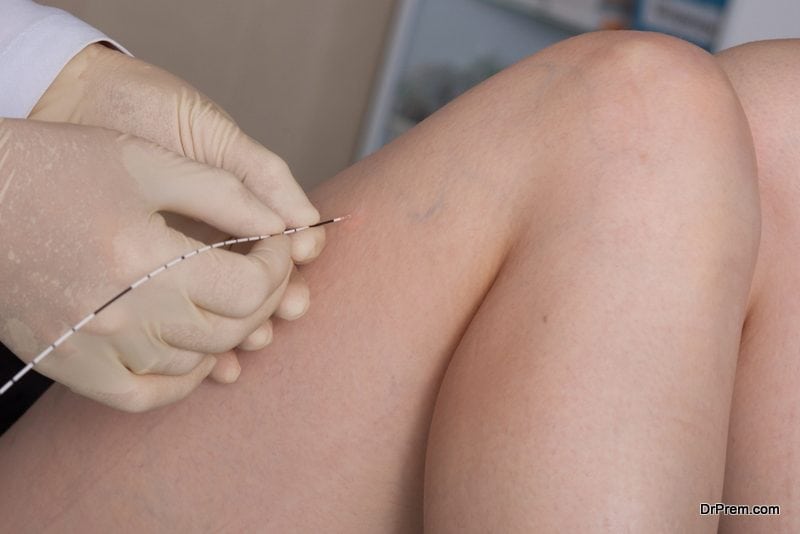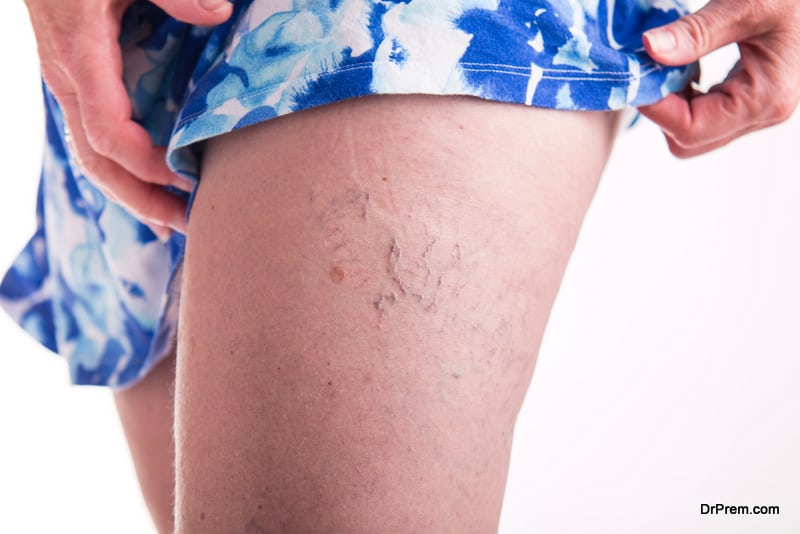Varicose Veins are enlarged discolored Veins , which appear swollen and wrapped. Varicose Veins are usually 3 millimeters or more in diameter. They are usually found on the back or thighs of the calves and are often painful and itching. Open blisters may appear from scratch. Varicose Veins occur more frequently with women and with men over 50 years of age. Despite the best efforts of researchers, the exact cause of Varicose Veins remains a mystery. Below are some of the causes.
1. Lack of exercise
 For long periods of time, standing or sitting, muscle obstruct the pump, causing blood stasis and swelling nerves in the legs. Long journeys by car, train and aircraft can be very stressful on Veins . From time to time dressing your ankle will pump your feet (simulation is running). During a long period of sitting or standing, turn your ankles ten times and repeat every 10 minutes.
For long periods of time, standing or sitting, muscle obstruct the pump, causing blood stasis and swelling nerves in the legs. Long journeys by car, train and aircraft can be very stressful on Veins . From time to time dressing your ankle will pump your feet (simulation is running). During a long period of sitting or standing, turn your ankles ten times and repeat every 10 minutes.
2. Alcohol consumption during flight
Within the cabin, low pressure and low oxygen environment affect the clotting system. Alcohol, tea and coffee work as a diuretic, which increases the dehydration of the body.
3. Obesity
 Obesity is a risk factor for Varicose Veins and vascular system in the feet due to excess pressure of excess fat. The weakness of the valve’s heritage in Veins and female hormonal problems (and pregnancy) is another risk factor. A heavier person passes extra weight in the stomach muscles of the foot nerves, causing Varicose Veins . In most cases, VaricoseVeins are found in the legs, stating that this condition comes from standing for long periods of time.
Obesity is a risk factor for Varicose Veins and vascular system in the feet due to excess pressure of excess fat. The weakness of the valve’s heritage in Veins and female hormonal problems (and pregnancy) is another risk factor. A heavier person passes extra weight in the stomach muscles of the foot nerves, causing Varicose Veins . In most cases, VaricoseVeins are found in the legs, stating that this condition comes from standing for long periods of time.
Weak vein walls can cause venous outbreaks, and this can cause a defect in the venous valve. It occurs with pregnant women or at this time because they produce hormones, which can weaken the Veins of the walls. Varicose Veins appear to be hereditary. Studies have shown that people with family members who have Varicose Veins are more likely to receive it.
4. Treatment for Varicose veins
 Researchers are not able to identify Varicose Veins, but there are treatments that can reduce some Varicose Veins. Surgery can be used to treat serious Varicose Veins . This technique is called intravenous stripping. This is usually done under local or partial anesthesia. This surgery involves the introduction of a flexible process through veins. When the application is removed, the Varicose Veins are removed with it.
Researchers are not able to identify Varicose Veins, but there are treatments that can reduce some Varicose Veins. Surgery can be used to treat serious Varicose Veins . This technique is called intravenous stripping. This is usually done under local or partial anesthesia. This surgery involves the introduction of a flexible process through veins. When the application is removed, the Varicose Veins are removed with it.
Two permanent processes can be used to remove severe Varicose Veins in the legs or thighs. These techniques are less attractive than separating Veins and do not require staying overnight. Both processes require the insertion of any device within the vein Veins . The process of closing the internal radio frequencies uses the catheter to transfer the RF energy to the Varicose Veins. The internal laser process uses laser diodes to transfer, laser energy into the vein. In both cases, intravenous medicine will become a scar tissue, eventually extinction in several weeks. You can find more on the treatment of Varicose Vein by visiting https://theultimateveinguide.com/after this process;a person can start his usual routine again the next day.
The most common treatment for severe Varicose Veins is sclerotherapy. This process does not require anesthesia and there is no need to stay overnight. Solutions such as sodium tetradecyl sulfate and salt solution are given an injection in Varicose Veins. This solution will seal the walls of the Veins and stop blood flow. The vein becomes a scar tissue and then fades in several weeks. Additional treatments may be needed for some cases.
Many daily routines can be adjusted to help prevent causes Varicose Veins. If the symptoms remain unmanageable, then medicinal care is best because it can be a sign of a serious vein disease. Meeting a doctor will help you as to what options you have to treat Varicose Veins .
Article Submitted By Community Writer




